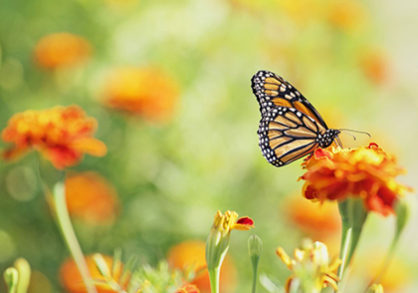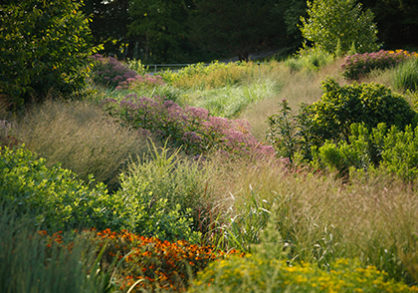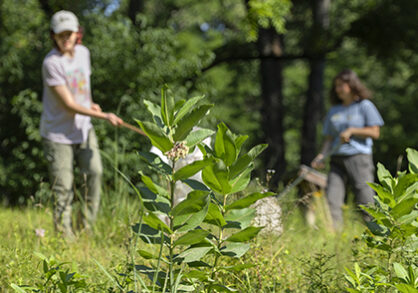Walk along the bank of Fall Creek and through the Mundy Wildflower Garden in this video with Krissy Boys, native plant specialist, to learn about beautiful native plants that bloom across the seasons and how they nurture pollinator insects and wildlife.
Over time, Cornell Botanic Gardens developed a native plant community in this natural area that forms a unified meal plan for native insects and birds. Elderberry, hackberry, and purple flowering raspberry bloom in summer, followed by fall-blooming asters, allium, and others. Krissy explains how insects use the pollen and nectar from these plants, with some needing specific plants to meet their food and reproductive needs.
Inspiration on gardening with native pollinator plants at home can be found in this new resource, “Creating a pollinator garden for native specialist bees of New York and the Northeast.” Krissy, Robert Wesley, field botanist at Cornell Botanic Gardens and volunteer Rosemarie Parker, contributed to this guide authored by Maria van Dyke and Bryan Danforth. While most pollinator garden planting guides talk about generalist bees, such as honey bees, this new guide provides detailed information on gardening for the native, solitary bees that are critical to biological diversity and that depend on specific plants to raise their young. Published by the Pollinator Network @Cornell.
Enrich your life with pollinators
Pollinating insects are good for the planet, for plants, and for you!
A Hardworking, Biodiverse Garden
The Bioswale Garden offers inspiration for using native plants to create biodiverse, pollinator-pleasing gardens that are beautiful across the seasons.
All about our Native Lawn
A lawn sown with native grasses does a world of good. Learn why and how to create one.


